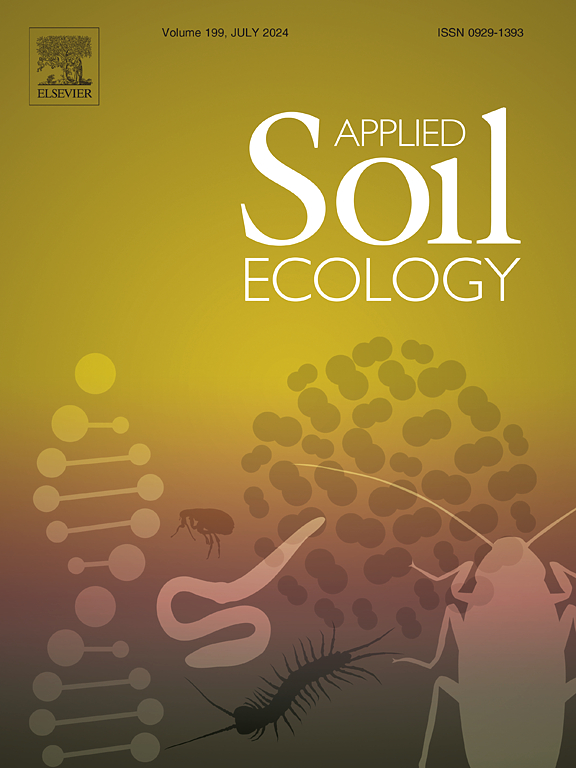高寒草地退化影响土壤性质和氮循环功能基因的丰度
IF 5
2区 农林科学
Q1 SOIL SCIENCE
引用次数: 0
摘要
大量研究在不同空间尺度上考察了草地退化对植被、土壤和微生物的影响;然而,氮循环功能基因对草地退化的响应及其与微生物群落的关系尚不清楚。本研究采用土壤大基因组测序技术,研究了高寒草地退化对土壤性质、微生物群落和氮循环功能基因的影响。结果表明:草地退化使土壤有机碳、全氮、全磷、速效氮、有效磷、纤维素、蔗糖酶和脲酶降低,ph值升高。草地退化使土壤微生物群落由富营养化类群(放线菌门和拟杆菌门)向贫营养化类群(酸杆菌门和绿氟菌门)转变,有利于群落适应环境干扰。此外,草地退化增加了与土壤硝化过程相关的pmoC-amoC基因的丰度,降低了土壤同化性硝酸盐还原和异化性硝酸盐还原基因(nxrA、nasD、gdh、nirD)的丰度。最后,通过构建结构方程模型表明,土壤TN和AN是驱动氮素循环功能基因变化的主要土壤因子。本研究将土壤微生物群落与N循环功能基因联系起来,进一步加深我们对退化高寒草地的认识,进而提出草地保护措施。本文章由计算机程序翻译,如有差异,请以英文原文为准。

Alpine grassland degradation affects soil properties and the abundance of N cycling functional genes
Alpine grassland on the Tibetan Plateau plays a crucial role in carbon and nitrogen fixation and the maintenance of biodiversity. Numerous studies have investigated the effects of grassland degradation on vegetation, soil, and microorganisms at different spatial scales; however, the response of N-cycling functional genes to grassland degradation and the relationship with microbial communities are still not clear. In this study, we used soil macrogenome sequencing technology to study the effects of alpine grassland degradation on soil properties, microbial communities, and functional genes of N cycling. The results showed that grassland degradation decreased soil organic carbon, total nitrogen, total phosphorus, available nitrogen, available phosphorus, cellulose, sucrase, and urease, but increased pH. Grassland degradation has shifted the soil microbial community from eutrophic groups (Actinobacteria and Bacteroidota) to oligotrophic groups (Acidobacteria and Chloroflexota) could help communities adapt to environmental disturbance. In addition, grassland degradation increased the abundance of pmoC-amoC genes related to the soil nitrification process and decreased the abundance of soil assimilatory nitrate reduction and dissimilatory nitrate reduction genes (nxrA, nasD, gdh, nirD). Finally, structural equation modeling was constructed to show that soil TN and AN were the main soil factors driving the changes of N cycle functional genes. This study links soil microbial communities with functional genes of the N cycle to further deepen our understanding of degraded alpine grassland, and then to propose grassland conservation measures.
求助全文
通过发布文献求助,成功后即可免费获取论文全文。
去求助
来源期刊

Applied Soil Ecology
农林科学-土壤科学
CiteScore
9.70
自引率
4.20%
发文量
363
审稿时长
5.3 months
期刊介绍:
Applied Soil Ecology addresses the role of soil organisms and their interactions in relation to: sustainability and productivity, nutrient cycling and other soil processes, the maintenance of soil functions, the impact of human activities on soil ecosystems and bio(techno)logical control of soil-inhabiting pests, diseases and weeds.
 求助内容:
求助内容: 应助结果提醒方式:
应助结果提醒方式:


